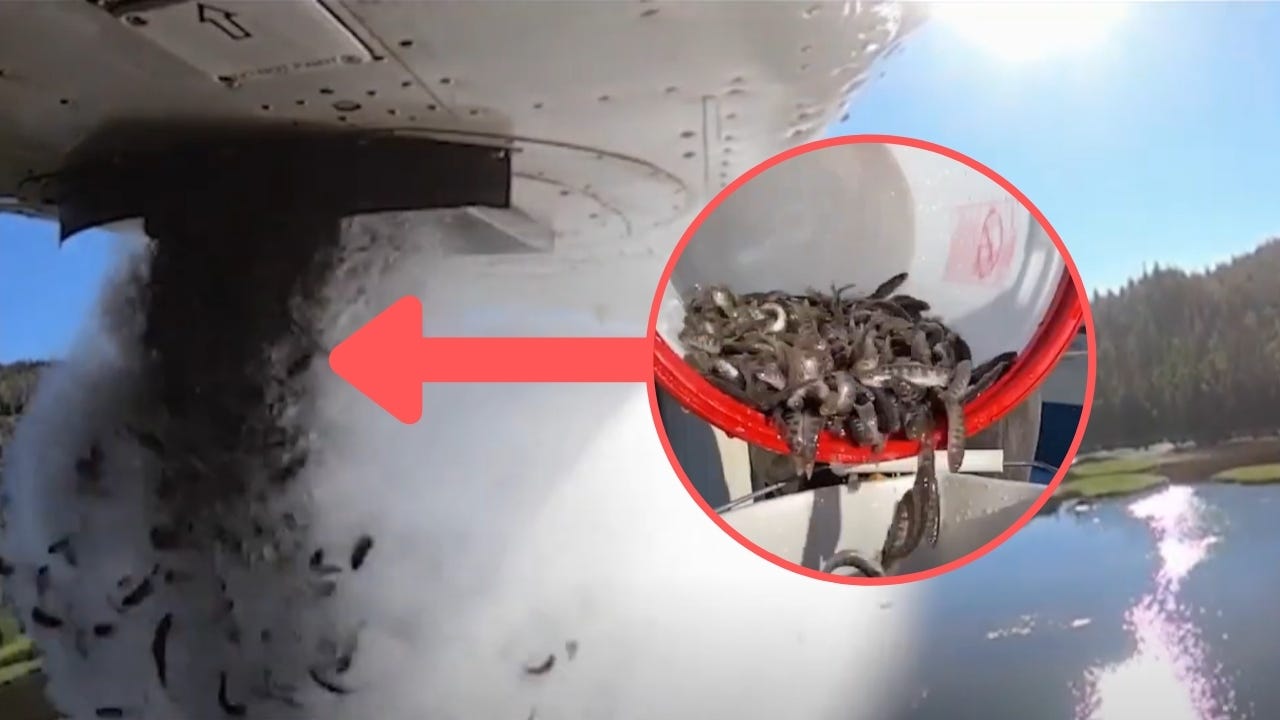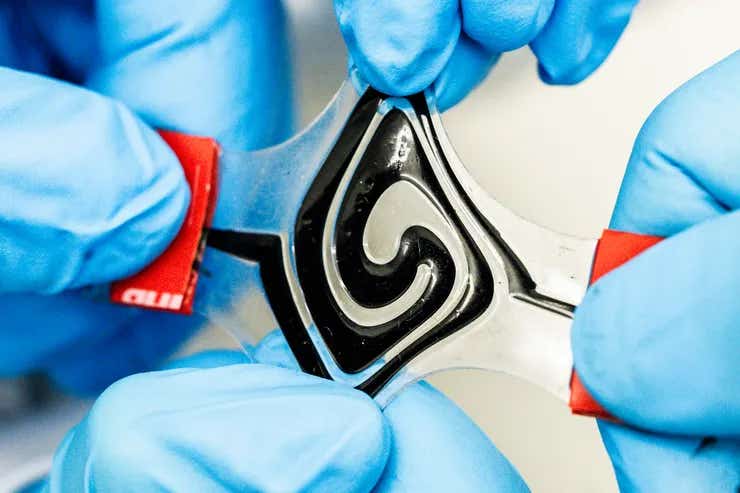Flying fish! State re-stocks southern Utah lakes from the air
We’ve all heard of flying fish, but thousands of juvenile trout took a nosedive from an airplane as part of efforts to replenish lakes

[July 11, 2021: Dan Avery]
We've all heard of flying fish, but thousands of juvenile trout took a nosedive from an airplane as part of the Utah Division of Wildlife Resources efforts to replenish lakes.
Video released by the Division on Friday showed countless 'fingerlings,' or fish under the age of one, released last week from a chute as the plane flew over some 200 high-elevation lakes across Utah that are not accessible by other means.
The plane holds hundreds of pounds of water and can drop 35,000 fish in a single flight without reloading, the division said in a Facebook post.
The video shows crews filling a tank inside a single-engine plane with the fingerlings. When it's time to reach the high-altitude lakes? The pilot flies above the tree line and bomb's away!
"The air slows their drop and they fall a bit like leaves. The slower fall allows the fish to survive. If the fish were larger, the survival rate would not be as high.
We make sure to only aerially stock fish that range from 1–3 inches long.
Fish are more stressed when transported by ground because it is difficult to maintain their required oxygen levels in small, packable tanks for such long distances.
Our high-mountain lakes are often many miles from any road," the DWR said in an FAQ it posted about the aerial fish restocking.
Aerial fish stocking has been employed in the state since the mid 1950s and the department says that survival rate is between 95 and 99 percent
According to a blog post by DWR biologist Matt McKell, fish are most often transported via a truck fitted with giant holding tanks that pulls up to a lake or stream, 'attaches a pipe to the tank outlet, opens a chute, and the fish slide directly into the water.'
But these lakes are too remote to reach via truck, McKell said. In the past, horses were loaded with metal milk cans filled with water and fish and trotted out to the high-altitude waterways.
'Horses are still used at times to get fish into hard-to-reach places. Recently, in northern Utah a particular situation required a little creativity to take fish to a remote section of a small stream on the Wasatch Front.'
McKell even recalled putting water and fish into a backpack lined with a heavy duty trash bag in 2015, then hiking up a canyon before releasing the fingerlings into a stream.
Workers at the Logan Fish Hatchery typically raise 250,000 fish for breeding, research, or to stock Utah's waters for sport every year.
For more green news stories check out our Green Impact section at The Brighter Side of News.
Like these kind of feel good stories? Get the Brighter Side of News' newsletter.
Tags: #Green_Good_News, #Fish, #Lakes, #The_Brighter_Side_of_News
Joseph Shavit
Head Science News Writer | Communicating Innovation & Discovery
Based in Los Angeles, Joseph Shavit is an accomplished science journalist, head science news writer and co-founder at The Brighter Side of News, where he translates cutting-edge discoveries into compelling stories for a broad audience. With a strong background spanning science, business, product management, media leadership, and entrepreneurship, Joseph brings a unique perspective to science communication. His expertise allows him to uncover the intersection of technological advancements and market potential, shedding light on how groundbreaking research evolves into transformative products and industries.



